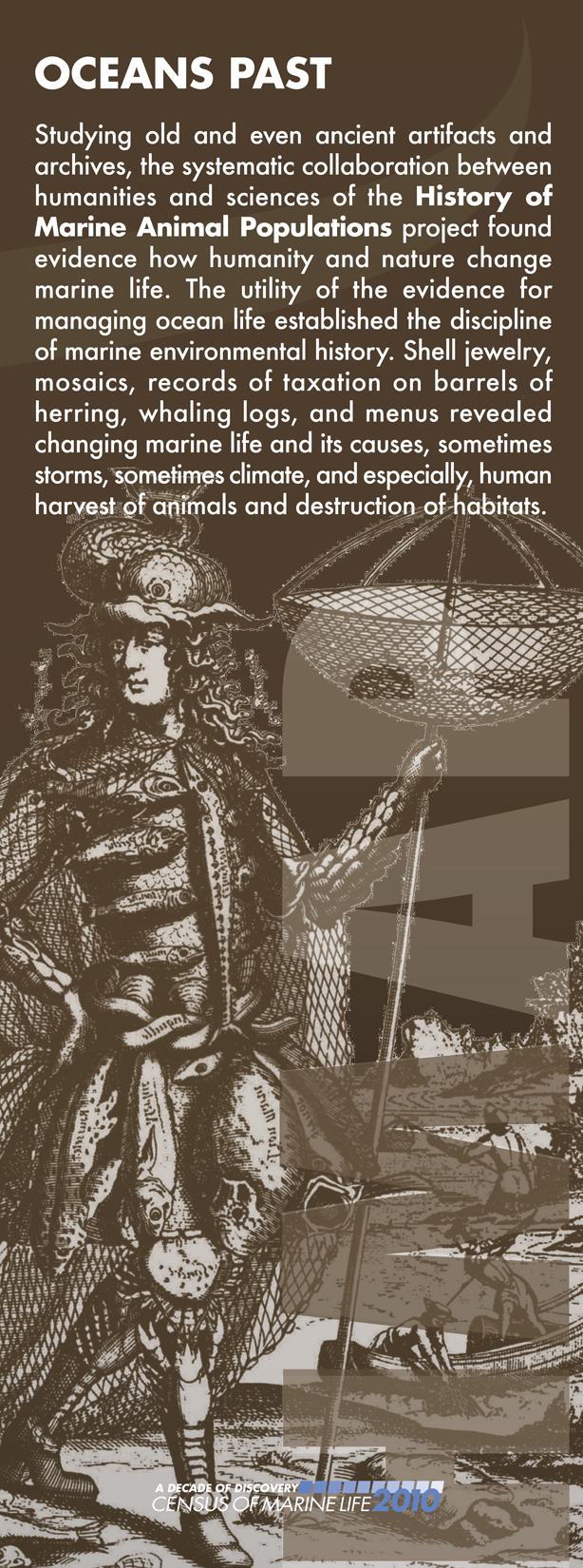History of Marine Animal Populations (HMAP)
 The History of Marine Animal Populations (HMAP), the historical component of the Census of Marine Life, aimed to improve our understanding of ecosystem dynamics, specifically with regard to long-term changes in stock abundance, the ecological impact of large-scale harvesting by man, and the role of marine resources in the historical development of human society. Since the earliest historical records, man has harvested a variety of different animals from the oceans. The effects of this activity on marine populations have been of increasing interest over the last century. While ecologists have traditionally aimed to identify the current conditions of many of the animal populations affected both directly and indirectly by harvesting, much less focus has been given to the status of affected populations in earlier times. A historical reference point of marine populations against which modern populations can be compared is necessary in order to determine how ocean ecosystems are changing with respect to human impact and even climate change. HMAP addressed this issue through multidisciplinary studies integrating Marine Ecology, History and Paleo-Ecology. This innnovative combination of research methods and analytical perspectives offered a unique approach to testing theories of the effects of both man’s activities and natural environmental changes on our living marine resources.
The History of Marine Animal Populations (HMAP), the historical component of the Census of Marine Life, aimed to improve our understanding of ecosystem dynamics, specifically with regard to long-term changes in stock abundance, the ecological impact of large-scale harvesting by man, and the role of marine resources in the historical development of human society. Since the earliest historical records, man has harvested a variety of different animals from the oceans. The effects of this activity on marine populations have been of increasing interest over the last century. While ecologists have traditionally aimed to identify the current conditions of many of the animal populations affected both directly and indirectly by harvesting, much less focus has been given to the status of affected populations in earlier times. A historical reference point of marine populations against which modern populations can be compared is necessary in order to determine how ocean ecosystems are changing with respect to human impact and even climate change. HMAP addressed this issue through multidisciplinary studies integrating Marine Ecology, History and Paleo-Ecology. This innnovative combination of research methods and analytical perspectives offered a unique approach to testing theories of the effects of both man’s activities and natural environmental changes on our living marine resources.
Brian MacKenzie, Denmark
Anne Husum Marboe, Denmark
Bo Poulsen, Denmark
Andrew Rosenberg, United States
HMAP Project Website
Project Description
 Printer-friendly version
Printer-friendly version- 2775 reads
